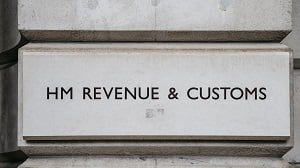What is a personal liability notice (PLN)?
Section 121C, Social Security Administration Act 1992 gives HMRC the power to issue a notice to an individual officer of the company to be personally liable for National Insurance Contributions or NIC. This power arises where in the opinion of HMRC there has been fraud or serious neglect by the company to pay National Insurance. The legislation allowing HMRC to issue and enforce PLNs only applies to National Insurance Contributions and late payment interest and penalties arising from them. PLNs do not apply to income tax. An officer of the company is not just the directors. Senior managers and shadow directors can can liable as well. The Finance Act 2020 has made this last point more explicit in that HMRC can issue a joint and several liability notice (JSLN) to anyone with a ‘relevant connection’
The HMRC do not want to penalize directors of struggling companies so generally HMRC may consider a case to involve more serious neglect where it can be established that, whilst not paying NIC,the company was making significant and/or regular payments to:
- Other creditors
- Themselves as directors
- Connected companies.
- HMRC will also only issue a PLN if they think there is a good chance of recovering the debt. As such, they are not used very often.
- Or the officers of the company have a history of repeated phoenixism (whereby companies appear to be liquidated for the sole purpose of evading tax)
What happens during the personal liability notice investigation?
An Inspector from HMRC will:
- Examine the company books and records.
- Invite representations from the officers of the company.
- Determine the reasons for the company’s failure to pay the National Insurance Contributions.
- Consider the extent of the negligence or fraud.
- Respond to representations by the persons named in the notice.
The burden of proof is on HMRC to show wrongdoing.
Obviously, the best way to avoid personal liability is by paying the NIC over or appeal to the Tax Tribunal.
There are other circumstances where the directors can be held personally liable for the company’s debts. This is mostly where the company has knowingly traded whilst insolvent. In this case the “veil of incorporation” can be lifted and the directors become liable for the debts of the company. In this situation the directors might find themselves disqualified as directors.
What if the company goes into liquidation?
If the company does go into the liquidation then the liquidator is duty bound to hand over all the relevant documents and evidence to HMRC so that they can assess what level of PLN can be issued and indeed who should be subject to them.



